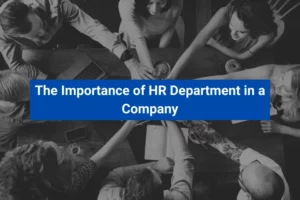What makes a good Head Hunter?
Many businesses choose to hire a Head Hunter to help them grow their pool of top talent. What attributes do you look for in a good Head Hunter?
What is a Head Hunter? Click Here>>>
- A thorough awareness of specific sectors and employment requirements
- The ability to recognize new talent
- Excellent at analyzing job descriptions and recognizing others' abilities
- Excellent interpersonal skills
- Determination, drive, and perseverance
Head Hunters have carved out a niche for themselves as a result of their aggressive networking and people abilities, and they are constantly sought after.
6 Effective Techniques for a Head-Hunter Click Here>>>
A professional Head Hunter will be polite and approachable, and they will already know what qualifies a candidate for the position. When they make contact with you, they may appear pushy or unprepared, which could be a red flag.
Head Hunting Process

The specifics of each company's Head Hunting procedure may vary, however in most circumstances, the recruitment process with a Head Hunter follows these steps:
1. Determine whether or not a new employee is required.
Typically, the hiring and Head Hunting team are approached by the CEO or another company executive to discuss the need for a new employee. The transition between the existing and new employee is sometimes kept private, especially in the case of high-level executives in major corporations. When seeking candidates, Head Hunters must sometimes exercise extreme discretion.
2. Identify the abilities and experience that are required.
Head Hunters evaluate which talents, experience, and other qualifications the organization desires in a candidate by working with human resources and other company personnel. To select the finest candidate, they must first understand the role for which they are looking for applications. To ensure clarity in their search, they should build a profile and compose a job description.
How to increase Recruitment through Social Media? Click Here>>>
3. Identify potential prospects who aren't actively seeking employment.
A passive candidate is a professional who is not actively looking for work and may already be employed elsewhere. A Head Hunter might look for people who fit this description and persuade them to change jobs. Typically, the Head Hunting team compiles a list of potential applicants and contacts them to gauge interest in the open position.
4. Take into account active applicants
In addition to their passive candidate search, the Head Hunting team may conduct an active candidate search. They use strategies like posting an open position on job boards or attending job fairs to discover active prospects. Candidates then submit their application materials, such as resumes, cover letters, and reference lists, for the recruiting team to evaluate.
6 Ways to Improve your Job Application Process Click Here>>>
5. Evaluate and vet
Head Hunters examine applications with the HR department and hiring managers to identify the top prospects after they have identified a group of possible candidates. They can reduce the search by comparing each candidate to the job description and initial list of requirements. This aids in the selection of candidates for the following stage of the process, which is typically an interview.
6. Conduct an interview and make a decision.
Employers frequently conduct a series of interviews in order to select the best candidate for high-level roles. The recruiting team meets after interviewing all applicants to discuss who has the most qualifications and is the best fit for the position. If the team is unable to make a decision, candidates may be called back for a second interview.
What are the Most Recent Trends in Recruitment? Click Here>>>
7. Extend the employment offer
It is the responsibility of the employer to offer the position to the candidate. Head Hunters are rarely involved in discussions, although they may be able to help if they attract a passive candidate from another organization. Compensation, benefits, and a description of the job role responsibilities are all included in a job offer.
Conclusion
Be aware that if you have significant skills and achievements in your field, you may be solicited. Make your LinkedIn profile as appealing as possible by updating it. It's also a good idea to have some responses to common career questions prepared, as well as a professional CV.
8 Ways to Boost Your Job Search on LinkedIn Click Here>>>
If a Head Hunter calls you, it indicates that they believe you are a good fit for the position. Make sure you're capable of meeting expectations, but keep in mind that you're in a strong position to negotiate a decent bargain.
For Human Resource, Payroll and many more HR Services, visit our website https://lingueeglobal.com/



